"Tachi Koto Blade, Kamakura/nambokucho In Shirasaya Attributed To «rai Kunimitsu Shodai » By « Honma Junji »"
Incredible and ancient Tachi Koto blade, from the Kamakura/Nambokucho period (14th century) in calligraphic Shirasaya (Sayagaki) by Doctor "Honma Junji" known as Kunzan (1904-1991). (Grand Expert Founder of NBTHK) who certified and attributed it to “来國光初代 RAI Kunimitsu Shodai”.
This Mumei blade was part of the old collection of the high-ranking "Ryuzodera" 龍造寺 family in Kyushu (Hizen Koku). As such, a label with the Mon of the family mentioning “Ryuzodera auction, object N° 26”. (Where this sword was on sale) is stuck on the Shirasaya.
The "Ryuzodera" were landlord lords in the region west of Hizen, now Saga Prefecture, Nagasaki City. Family of Daimyos who governed and fought during the Sengoku period, on the death of Takanobu, the Masai descendant, received from Toyotomi Hideyoshi the territory of 7 Cantons corresponding to approximately 31,000 Goku, the Daimyo Nabeshima, only possessed approximately 3.
All these elements give this sword all its authenticity. It's an exceptional piece, the kind you only come across once in your life!
Mumei blade (unsigned)
Name of blacksmith: RAI Kunimitsu (1326-1351)
Location: Yamashiro, the longest-serving craftsman of the Rai School.
Swordsmithing school: RAI - Location: Kyoto
Period: Late Kamakura/early Nambokucho - Eras: Karyaku to Kannoo. We can estimate that this sword was made in the middle of its very long period of production, according to its particularities: shape, Hamon etc...
The blade is certified by a Sayagaki calligraphy by the Expert, "Honma Junji" known as Kunzan dated Showa58 or 1983.
Torokusho No. 25570: Issued by the Prefecture of Saga (Kyushu) The southernmost island of the 4 large islands forming Japan, (also known for its porcelain). Date: Showa 58: i.e. 1983, May 10.
CHARACTERISTICS:
Total blade length: 83.7cm
Nagasa: 68.8cm Weight: 649grs
Sori: Height: 1.3 cm - Type: Koshizori (towards Nakago)
Mekugi ana: 1
Nakago type: Standard (Futsu gata) - End type: Kiri, O-Suriage (very heavily cut). Which probably eliminated the original signature of this Tachi, as is often the case for these Koto Saijo-Saku – Yasurime blades of type: Kiri Ichimonji
Mune of type: Iori Mune
Nagashi (features made by the Togishi, master polisher), at the level of the Nakago Sugata of type: Shinogi Zukuri Gorges: No-hi (without) Jihada of type: Ko-Itame hada (very fine) "地金典型 Jigane Tenkei", characteristic inscribed by the expert on the Saya Hamon Type: Chu-Suguha en Nie Deki Kissaki Type: Chu-kissaki Boshi Type: O-maru Steel Type: Tamahagane "Jigane Tenkei" Condition: Very Good
Flaws: Some minor Tateware towards the Mune (These are small forging defects, quite normal on blades of this period.) 2 small Kirikomi (impacts resulting from past fights).
SHIRASAYA: Sayagaki (Calligaphie Inscriptions on the Saya by Kunzan, Grand Expert Founder of NBTHK) the quantity of swords seen, one of the best, Magnificent!
Inscriptions/commentary on the Saya by expert “Kunzan”: Yamashiro Kuni Rai Kunimitsu, Jigane Tenkei, Oriyubi no Hitotsu, Hacho 2 Shaku 2 Sun 7 Bu kore. In Date of Showa Mitzunoto I 58Nen (1983), Mizu nashi Tsuki is the month of June, in our offices in Kugayama (Tokyo). Then Signature "Kunzan Shi" + Kao, which gives in Japanese: 昭和癸亥年水無月於久我山房 薫山誌(花押). On the other side, the label of the Ryuzodera Sale with the Kamon of the family Lot No 19.
Rai Kunimitsu Certified by Kunzan. Kunimitsu 國光 初代:
The production period of Kunimitsu extends from the end of the Kamakura Period to the beginning of the Nambokucho Period. Eras: Karyaku to Kannoo (1326-1351). During his long career he forged many and very varied saber blades and he is often mentioned as the initiator of the “Soshuden” tradition. He forged many Tanto and some Tachi. Also recognized for his very fine Jihada said: Kunimitsu-Hada.


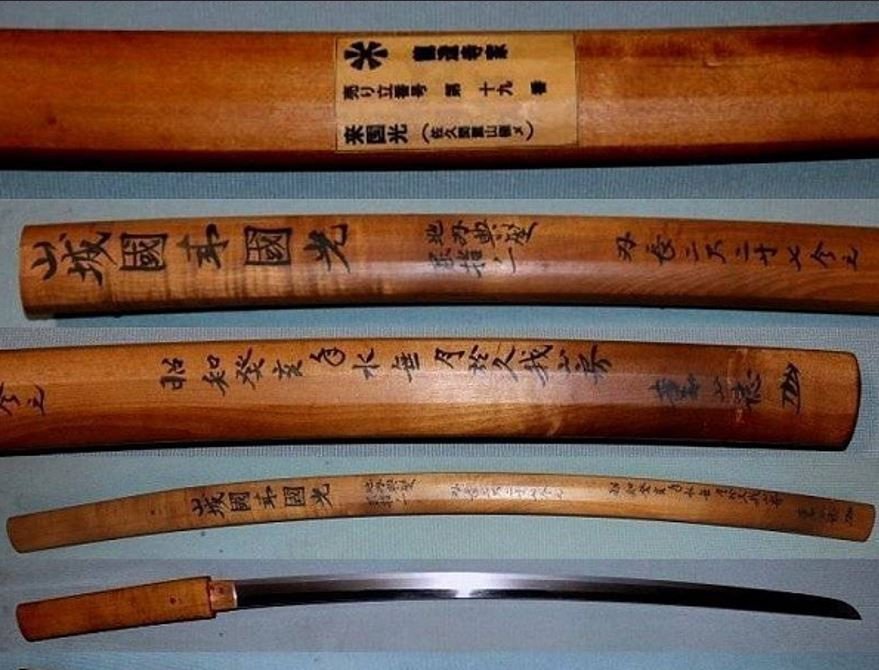

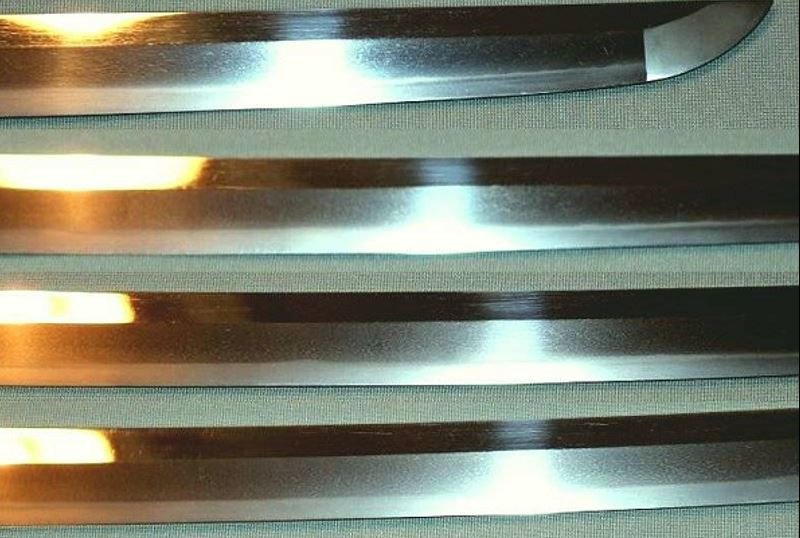
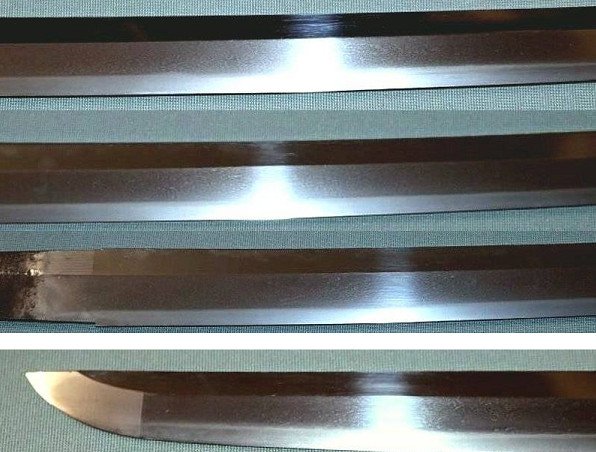











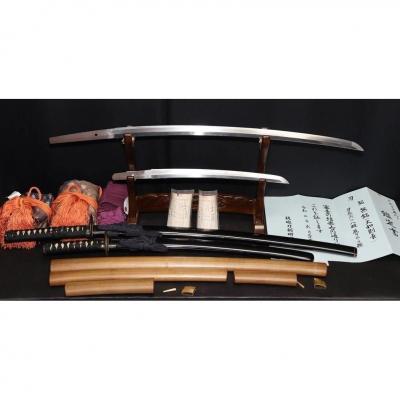

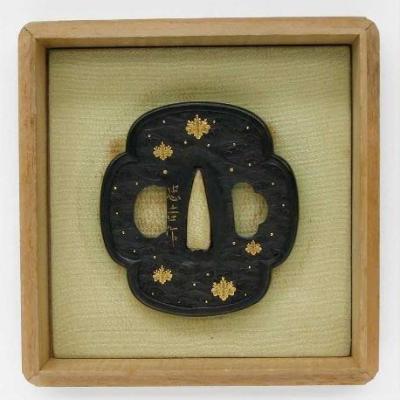
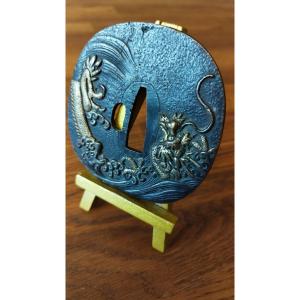


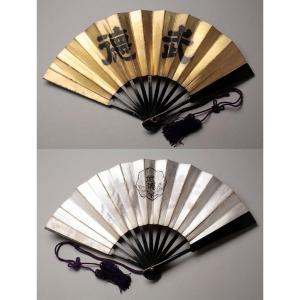

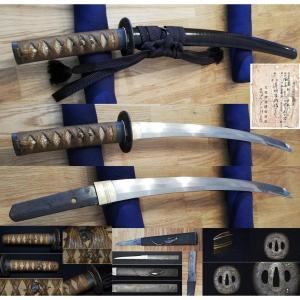

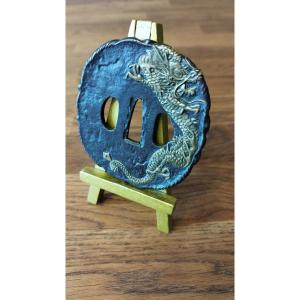


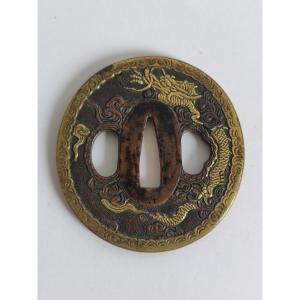
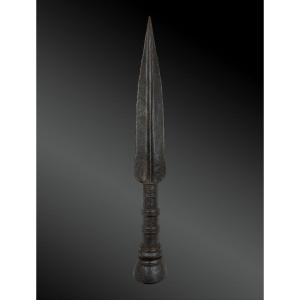
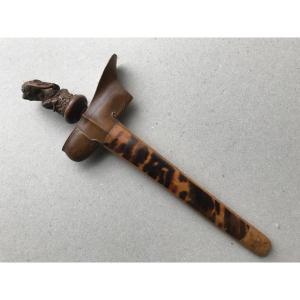




 Le Magazine de PROANTIC
Le Magazine de PROANTIC TRÉSORS Magazine
TRÉSORS Magazine Rivista Artiquariato
Rivista Artiquariato